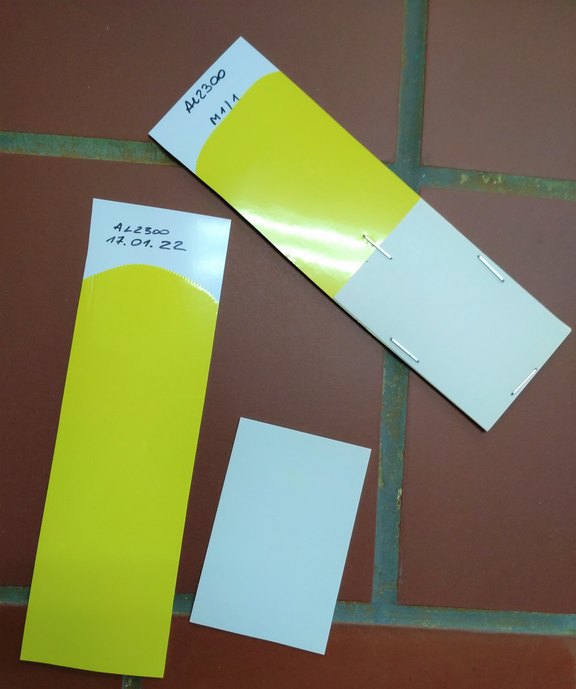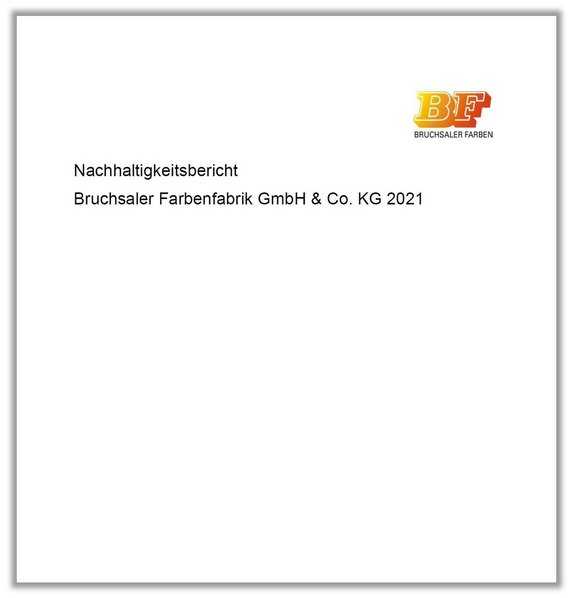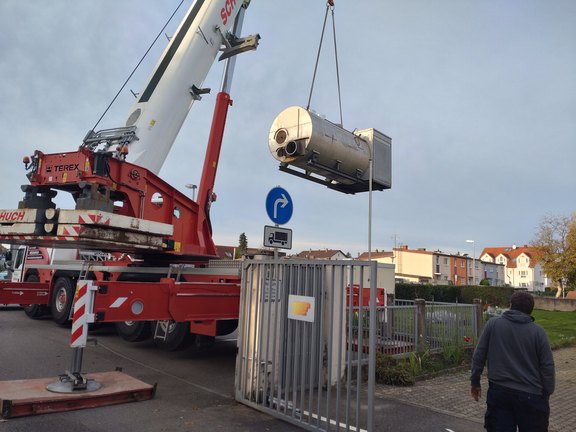An important quality criterion for our bismuth vanadate is lightfastness. The beautiful hue of this yellow pigment should not change under light, especially UV light. Fortunately, bismuth vanadate is already extremely durable by nature.
If you want to find out how a pigment behaves in the light, you either have to test it under real conditions or imitate them. Mimicking this situation has the advantage that you can standardize conditions and reproduce results. We expose our draw-downs to light for seven days in a special apparatus, just as the industry standard requires. The lamp imitates the full daylight spectrum, and ventilation ensures that the samples do not heat up too much.
Part of the draw-down is covered light-proof and a sample of a standard pigment is prepared the same way. This allows us to assess the change in the sample itself, as well as the change in comparison to the standard.
After exposure, the sample is kept in the dark for twelve hours, as the bismuth vanadate can temporarily change color when exposed to very intense light (photochromism). After that, the exposed part of the coating is compared with the unexposed part. Our bismuth vanadates regularly score a lightfastness of 8 on a scale from 1 (very low) to 8 (excellent).



